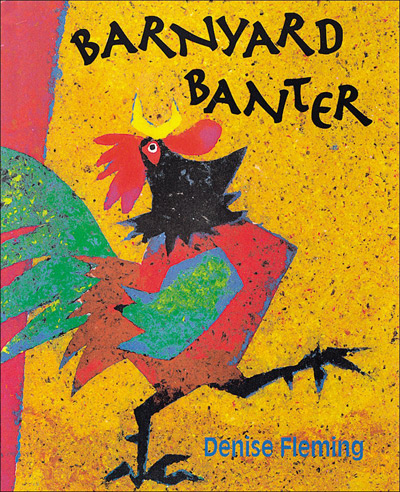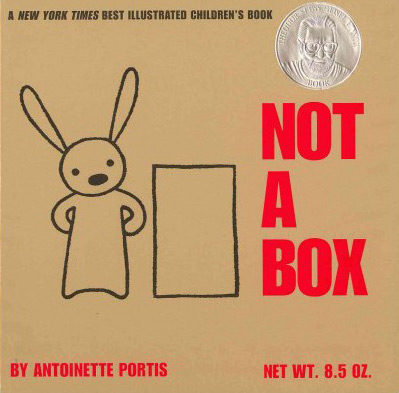Welcome to the 2019 Pennsylvania One Book website
As you explore our site, you will notice some changes from previous years. What hasn’t changed is our commitment to support early literacy for Pennsylvania’s youngest learners.
Barnyard Banter by Denise Fleming, for infants and toddlers (available in English only)

Not a Box by Antoinette Portis, for children ages three to five (available in English and Spanish)

Fun Guides, which contain activities that align with the Pennsylvania Standards for Early Childhood, are available for BOTH books on this site – as well as all of the Family Fun Guides from the previous years.
In order to get more books into the hands and homes of more children, PA One Book is working with the Scholastic Publishing Family and Community Engagement (FACE) program. Families, early learning providers, library staff and community partners can purchase the paperback books from this site. If you would like to join FACE, download the membership brochure here. If you are an individual please feel free to purchase a copy form your local bookstore or online retailer.
We hope you enjoy this year’s book selections!
Early Literacy is Important!
Pennsylvania One Book is an established program that highlights the importance of early literacy development in preschoolers and the significance of reading early and often to children.
Facts about the importance of language and reading
- Ninety percent of a child’s brain growth occurs during birth and 4 years of age, so it is suggested that parents begin reading to their child at birth.
- When we read picture books to children, researchers have found that 95 percent of their attention is on the pictures. By occasionally pointing to the words in the book, you are helping them realize that it is the text we are reading, not the pictures.
- Research has shown that children who play with sounds of words in the preschool years are better prepared to read when they get to school.
- The language used in story books is different from what we use when we are speaking. Stories also have a certain structure with a beginning, middle and an end.
- Reading aloud introduces the patterns of language and develops vocabulary.
- Reading to a child just 20 minutes each day will enable him or her to hear 1 million words in a year and will expand his or her vocabulary by 1,000 words.
- Acting out stories or parts of them, having young children use their whole bodies, helps them internalize and understand what is happening in the story.
- Reading aloud helps a child develop a longer attention span and encourages the art of listening.
- Sharing stories introduces and keeps alive the cultural heritage of our own traditional tales and those of other cultures.
- Rhyming is one way that children learn to hear that words are made up of smaller parts.
- Writing can be very motivating. It helps children make the connection between the spoken and the written word. Writing begins with scribbles and develops into the ability to write letters.
- By using specific names for things, like cat and kitten, not only helps children learn new words, it also helps them understand differences between similar things.